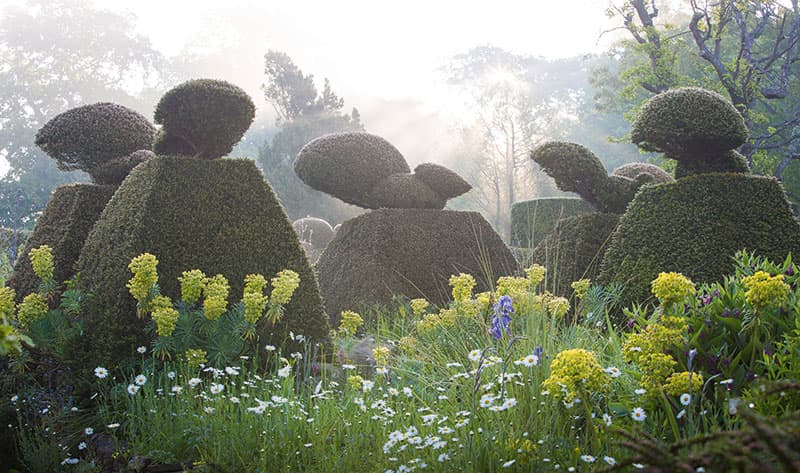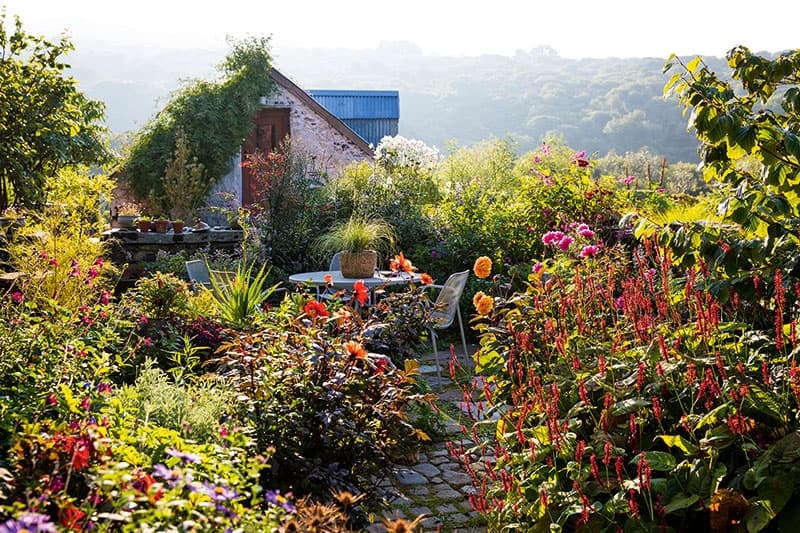I see gardens as works of art and believe in their ever-increasing importance in our daily lives. I love to capture the beauty and essence of gardens and landscapes around the world, particularly while working with light. My work is widely published in magazines internationally, including Gardens Illustrated, Garden Design, House & Garden, Country Style and Morning Calm. I also won the inaugural International Garden Photographer of the Year Award in 2008.

Credit: Claire Takacs
1. Lead the eye in
Framing your image so that a pathway in a garden leads and invites the viewer’s eye into the image can be really powerful. It can help viewers imagine themselves being there more clearly and lead them through the garden scene.
2. Shoot into the light
This is my top tip! It really creates the most exciting light and, often, images. I prefer avoiding complete flare though, as most of the time it can distort colours. Instead, position yourself and frame the image so that something blocks the direct sunlight from hitting the lens, such as a tree or house.
3. Use a ladder
Take your own ladder with you or ask the garden owners if you can borrow theirs. I’ve found this very useful recently, especially with gardens later in the season with tall perennial plantings. In the bottom right image, I wouldn’t have been able to show both the garden and house without getting that extra height from standing on a ladder.
4. Shoot at sunrise and sunset
It’s helpful to have at least two attempts at photographing a garden – sunset and sunrise – so you can get to know it more intimately. Shooting at these times of the day will let you capture both directions of light. Some gardens or parts of, will be best shot with evening light, while others benefit from morning light.

Credit: Claire Takacs
5. Create layered images
Shoot as though you are photographing a landscape. Have foreground, mid-ground and background interest and edit/crop your images tightly, so that everything has a purpose and feels balanced. Try to create images that keep your eye within the frame by directing viewers to where you want them to look.
6. Spend time with owners/designers
It’s very important to get a good feel for a garden. Find out what special plants will be flowering at the time of your shoot. Ask the owner/designer what they are trying to achieve, the viewpoints/angles they love or any of their favourite or special design features. It will really add to your photography if you do this, and make the whole experience more enjoyable and richer than purely just taking pictures.
7. Remove distracting elements
Avoid capturing distracting elements while shooting preferably or crop later when editing as a last resort. These could be garden hoses, distracting leaves, power lines, and so on. Work on your images and take another look at them in a few days – this way anything distracting should jump out at you. You want the viewer to look at the whole image and not that one distracting element.

Credit: Claire Takacs
8. Timing is everything
If possible, do an initial visit to the garden and talk to the owners/designers about peak moments in the garden; then plan your shoot around this. For example, being present for the flowering of these 20,000 blue irises at Bryans Ground was great. It’s then just a matter of waiting for the best weather conditions.
9. Link garden to the distant landscape
Give the garden a sense of place by showing its context in the wider landscape. It’s valuable to see how a garden is placed and connects to its surroundings. Try to do this when the light is at its best, that is, close to sunrise and sunset. This is when you can take those wider landscape shots, because the light is still soft and there isn’t too much contrast.

Credit: Claire Takacs
10. Use a reflector
When shooting into direct sunlight and you are unable to block harsh rays from hitting the camera, depending on the angle, use the black cover of a reflector to prevent the flare from hitting the lens.








